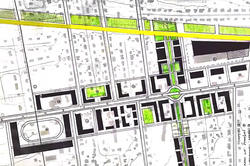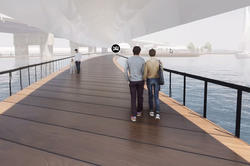Landscape Architecture students develop environmentally just proposals for managing sea-level rise in the Narragansett Bay as part of the Envision Resilience Challenge.
Immersive Airport Design
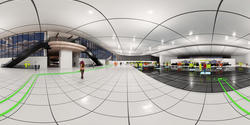
Despite the countless advances in technology of the past few decades, air travel has not changed much since 9/11. Travelers still crowd into departures terminals to check in and check their baggage, stand shoeless in long security lines and then listen through a jumble of garbled announcements while waiting at the gate for their flights to board.
“A primary advantage of these more experiential formats is their capacity to actively engage users.”
Students in a graduate-level spring studio called Alternative Realities are using augmented, virtual and mixed-reality approaches to reimagine air travel as an easier, safer and more entertaining experience. “A primary advantage of these more experiential formats is their capacity to actively engage users and push a project beyond the typical scope of pin-up and projected formats,” says Landscape Architecture faculty member Andrew Hartness, who is teaching the class.
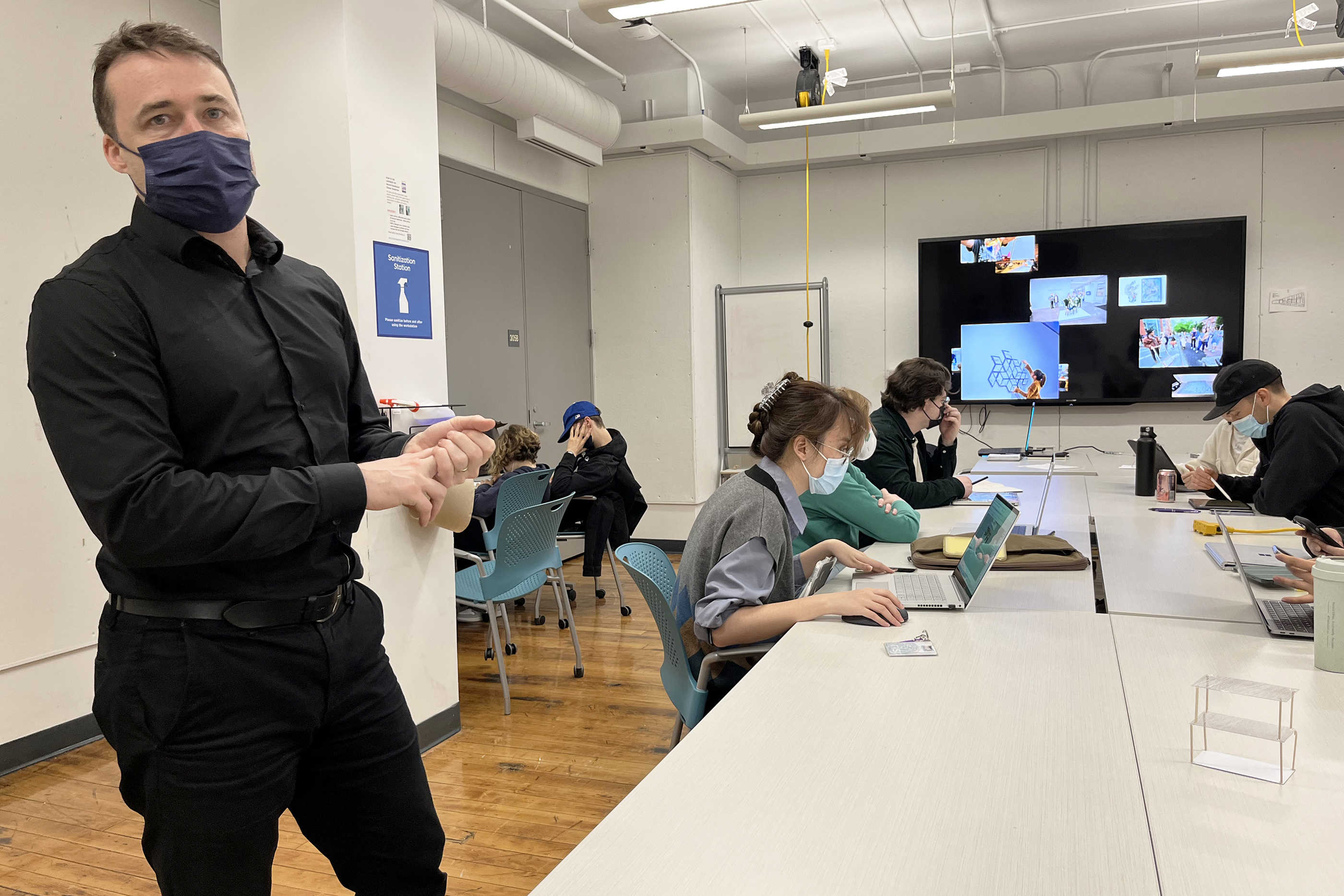
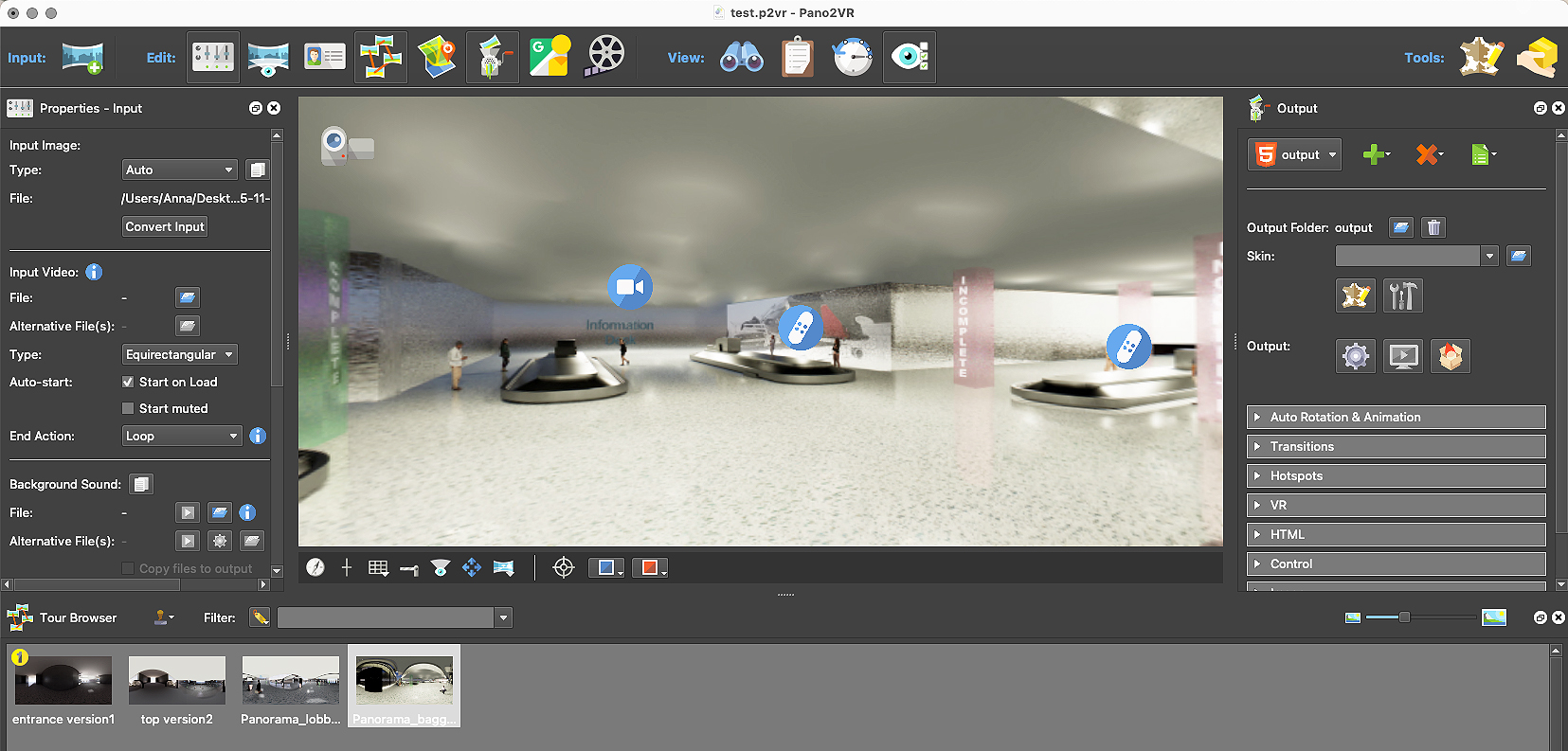
The class got started with a behind-the-scenes tour of Terminal C in Boston’s Logan Airport, home to commuter airline JetBlue. Students observed that the terminal became so crowded during peak travel hours that customers were unable to access or even see available kiosks. Each student selected a specific issue to focus on, from check-in to security to finding a quick snack before boarding, and shared their ideas at a mid-semester review in April.
Grad student Tyler Lovejoy MArch 22 proposes a squadron of mobile kiosks that would circulate among customers “using technology similar to the Roomba vacuum” to avoid collisions. The WALL-E-like units might project colored lights on the terminal’s curved ceiling to indicate whether or not they were available and could make life easier for travelers by transporting heavy luggage to the conveyer belt.
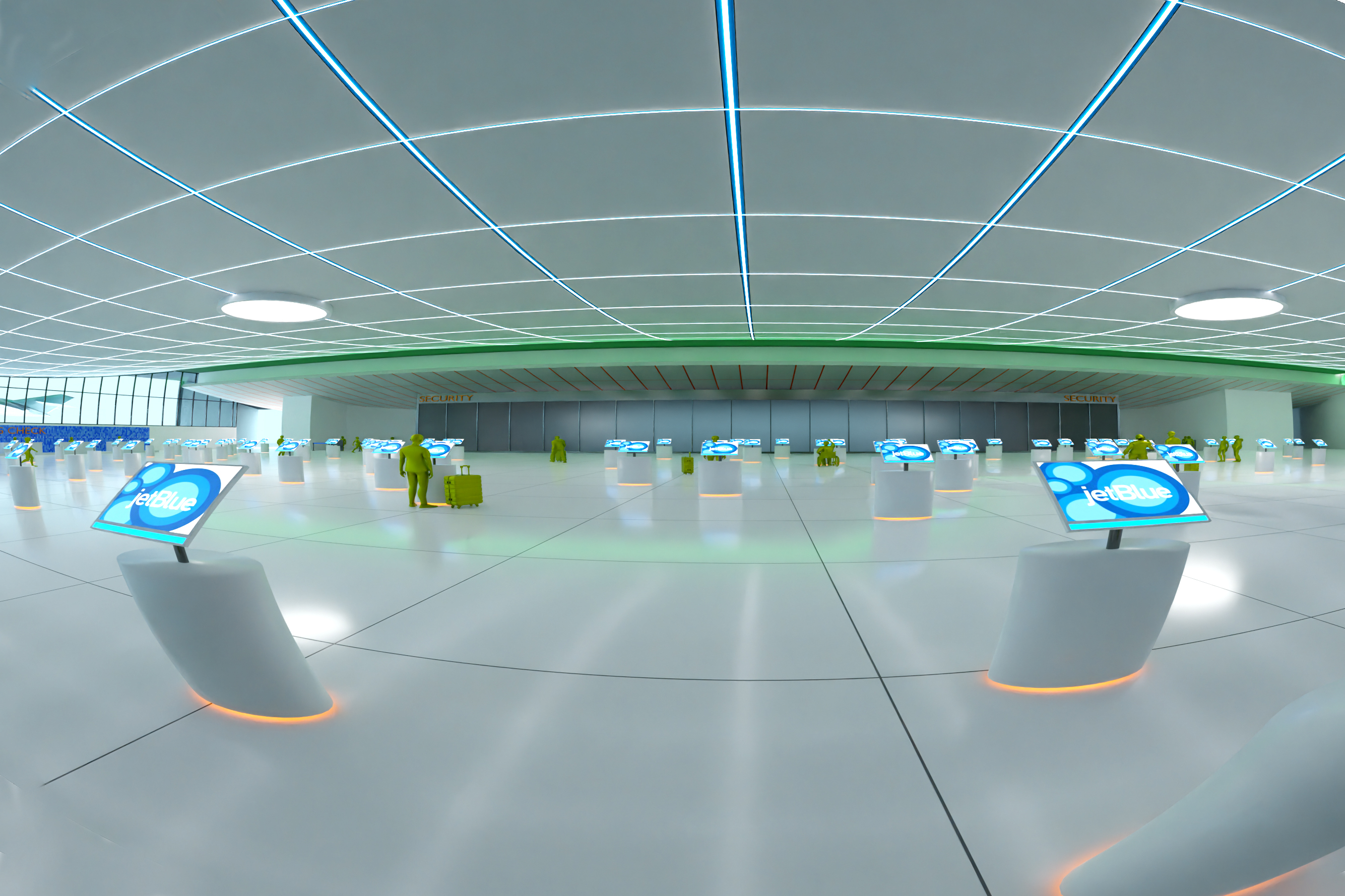
“I would describe your design language or focus as mobility,” Hartness offered during the crit. And although he appreciated the digital rendering Lovejoy created using Pano 2VR, he wondered if the space would feel more realistic with a crowd of travelers sketched in.
Fellow Architecture student Madaleine Ackerman MArch 22 looks further into the future with her speculative design. She imagines amorphous forcefields that would envelop travelers and scan them for explosive devices, weapons and other prohibited items. She included in her rendering a kind of museum display featuring current check-in and security technology. Hartness was particularly taken by the “squishy chairs” she imagined for passengers to relax for a few minutes while getting scanned.
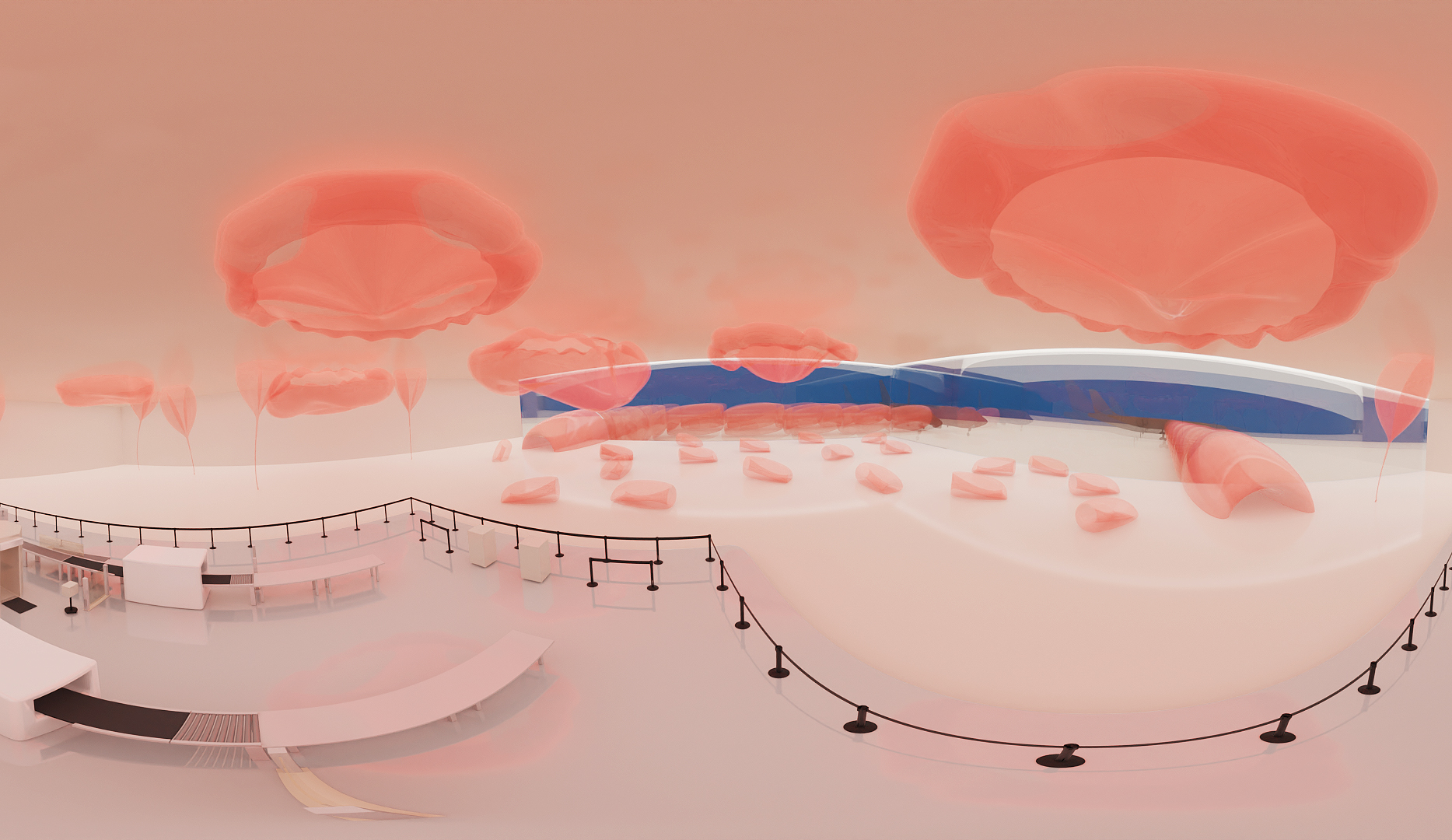
Katie McLeod MArch 22 envisions a moodier and more entertaining airport experience (“terminals are always way too bright,” she notes). Passengers in the spaces she rendered in Rhino software would check in using touch-screen plinths and then move through darkened spaces along lit paths to reach security and ultimately their gates. Waiting areas would feature interactive games projected on the walls.
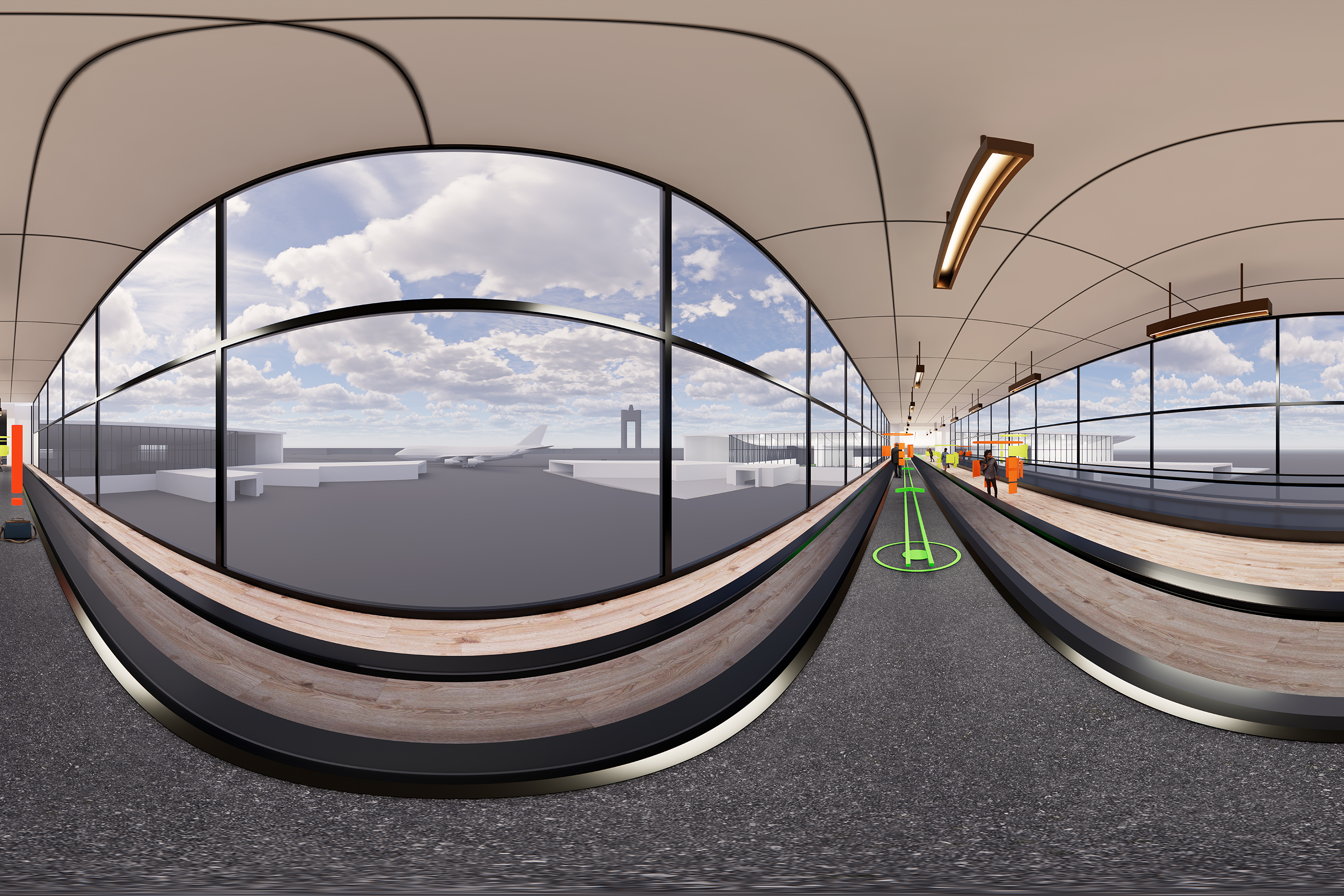
Other people in the class, including Interior Architecture student Zhaoyang Cui MDes 23, focused on mixed-reality approaches to traveler conveniences. Augmented reality features linked to travelers’ mobile phones would indicate where available seats are located and when their row is called for boarding, and would even allow users to order food from nearby vendors and call an Uber after landing.
“Everything in an airport is stationary except the people and their luggage,” Hartness noted during the crit. “What’s great about your approach is that the motion graphics you created like ‘line starts here’ really catch your eye. That’s how AR can set itself apart from reality.”
—Simone Solondz
May 19, 2022

